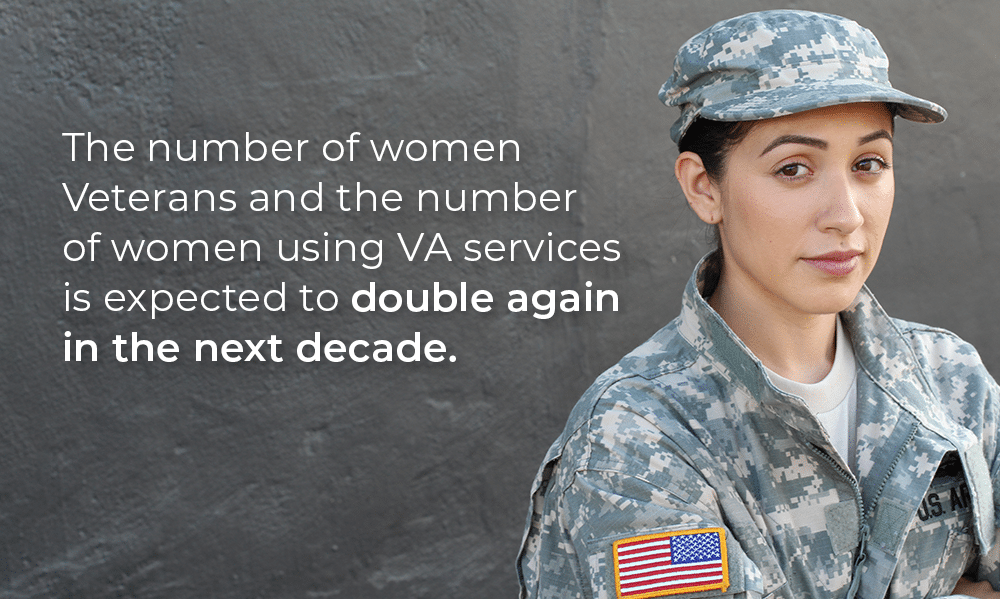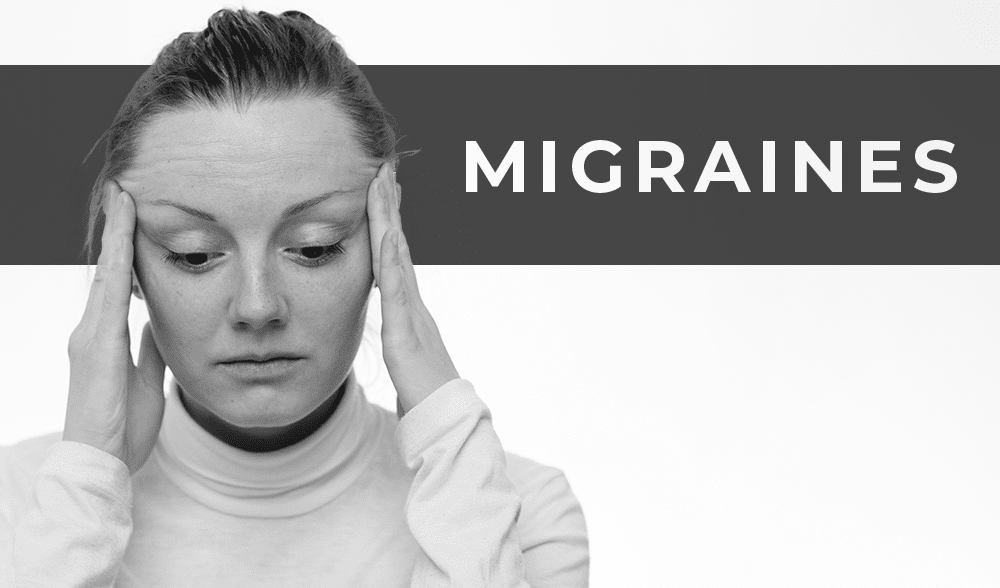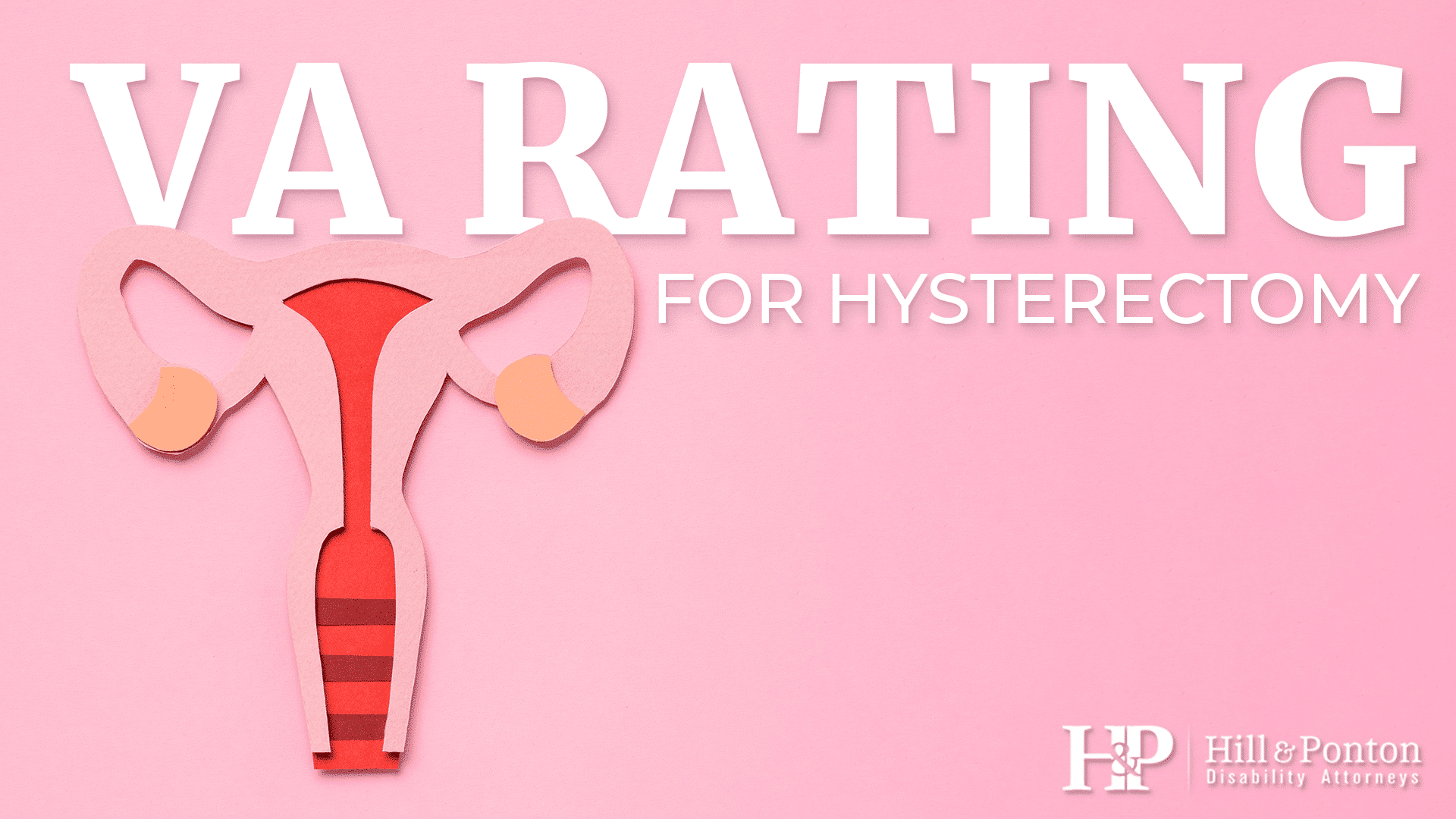Women have served in the military from the American Revolution to the present.
Unfortunately, women have been historically underrepresented in utilizing the benefits that the U.S. Department of Veterans Affairs provides.
Women now make up 20% of active duty and Guard/Reserves service members, as well as 11% of the total veteran population.
Based on the upward trend of women in all branches of service, the number of women Veterans and the number of women using VA services is expected to double again in the next decade.

Between 2003 and 2012, there was an 80% increase in the number of women using VA healthcare services.
But while the number of women VA has continued to grow, women comprise only six percent of VA’s total patient population.
Women Veterans underutilize VA care and benefits, largely due to a lack of knowledge about VA benefits and available services.
That being said, as women leave active duty service and convert to veteran status, certain common issues afflicting their mental and physical health are emerging.
The following are the top five most prevalent service-connected disability conditions claimed by female disabled Veterans and accounted for 33 percent of all service-connected disabilities for women military Veterans.
Additionally, we will touch on Total Disability due to Individual Unemployability (TDIU or simply IU), a claim for total disability when a Veteran is not able to maintain substantially gainful employment as a result of their service-connected disabilities.

1. Post-Traumatic Stress Disorder
PTSD is a mental health problem that some people develop after experiencing or witnessing a life-threatening, traumatic, or terrifying event.
Events such as combat, a natural disaster, a car accident, or sexual assault can cause PTSD, and traumatic events are common during active duty military services.
It’s normal to have upsetting memories, feel on edge, or have trouble sleeping after this type of event.
At first, it may be hard to do normal daily activities, like go to work, go to school, or spend time with people you care about. But most people start to feel better after a few weeks or months.
If it’s been longer than a few months and you’re still having symptoms, you may have PTSD.
In 2015, nearly 48,000 women Veterans received compensation for PTSD. PTSD accounted for roughly 12 percent of all service-connected disabilities for women Veterans.
Symptoms of PTSD are tricky to characterize because the amount of time it takes for them to manifest varies widely.
PTSD can result from services in all branches of the armed forces.
Military Sexual Trauma (MST)
When discussing PTSD, it’s important to note that military sexual trauma is another prevalent issue for women veterans.
MST refers to any type of sexual harassment or sexual assault (including rape).
In 2018, 20,500 service members were sexually assaulted, and this included 13,000 woman.
While this number went up nearly 40% from 2016 to 2018, many instances of MST still go unreported.
Mental health care is essential for veterans living with PTSD and MST, as the effects of these conditions can be barriers in readjustment to civilian life.

2. Chronic Back Pain
Chronic back pain (CBP) can make everyday life more difficult. Activities like driving a car, sitting at a desk, or even tying a shoelace become difficult tasks.
The condition can be debilitating and, unfortunately, for as many as 40 percent of Veterans over 65 years old, it is a way of life.
Untreated, CBP can contribute to depression, disability, and a poor quality of life.
Unfortunately, the treatment options can seem only marginally better: Long-term opioid use or invasive procedures such as surgery are often the norm for those with CBP.
In 2015, roughly 22,200 women veterans received compensation for lower back pain.
According to the Cleveland Clinic, Center for Continuing Education, low back pain can best be described in terms of specific accompanying features. Low back pain is acute if it has a duration of about 1 month or less.
Chronic low back pain is usually defined by symptoms of two months or more.
Both acute and chronic low back pain can be further defined by the presence or absence of neurologic symptoms (a disorder of the nervous system) and signs.

Did the VA Deny Your Disability Claim?
Let our team review your case today!
Get a Free Case Evaluation3. Major Depressive Disorder
Mental health is a significant concern among all veterans.
A 2018 report by Service Women’s Action Network found that 60% of participating women veterans said that military service negatively impacted their mental well being.
And 61% of participants had been clinically diagnosed with some sort of depression.
In 2015, roughly 26,500 women Veterans received compensation for major and persistent depressive disorders.
Major Depressive Disorder is a common but serious mood disorder. It is often accompanied by low self-esteem, loss of interest in normally enjoyable activities, low energy, and pain without a clear cause.
People may also occasionally have false beliefs or see or hear things that others cannot. Some people have periods of depression separated by years in which they are normal while others nearly always have symptoms that are continuously present.
Major depressive disorder can negatively affect a person’s personal, work, or school life; as well as sleeping, eating habits, and general health.
To be diagnosed with depression, the symptoms must be present for at least two weeks.
It’s also important to note that suicide rates among war veterans are higher than that of the civilian population.
More recent data shows that the suicide rate among women veterans in the United States was 2.2 times higher than that of women in the general population.
This statistic is 1.3 times higher for male veterans. Veterans experiencing mental health challenges can find suicide prevention resources and links to mental health services on the VA’s website.
They can also call the CA Crisis Line at 800-273-8255.

4. Migraines
Data shows that 85% of migraine sufferers are women.
In 2015, over 24,000 women Veterans received compensation for migraines as a disabling condition. Migraines are often secondary to other conditions as well.
For example, if a U.S. Army veteran sustained a head injury from an explosion in Iraq, they may develop migraines as a result.
Symptoms of a migraine can include nausea and/or vomiting, sensitivity to light and sound, and changes in vision.
According to the Mayo Clinic, migraines often begin in childhood, adolescence or early adulthood.
Migraines may progress through four stages: prodromal (subtle changes that warn of an upcoming migraine); aura (usually visual disturbances that may occur before or during migraines), headache (usually lasts from 4 to 72 hours); and post-drome (some may feel drained while others may feel elated after a migraine attack), though you may not experience all stages.
People with a chronic migraine are more likely to be unable to perform the functions required of them at their job, and less likely to be employed full time than people who have migraines less frequently.
Over a three month period, people with chronic migraines miss an average of 63 days of work, school, and time with family.

5. Removal of the Uterus and Ovaries
Gynecological conditions are among the more prevalent health issues for women veterans.
In 2015, roughly 12,700 women Veterans had the complete removal of their uterus and ovaries. Roughly an additional 10,500 female Veterans had the removal of their uterus that included their corpus. (The main part or body of a bodily structure or organ).
According to the U.S. Department of Health and Human Service, Office of Women’s Health, a hysterectomy is a surgery to remove a woman’s uterus (also known as the womb).
In most cases, the entire uterus is removed.
The doctor may also remove the ovaries and the fallopian tubes during the procedure.
The surgery can be used to treat a number of chronic pain conditions as well as certain types of cancer and infections.
Individual Unemployability Among Women Veterans
Individual Unemployability (IU) is a component of VA’s disability compensation benefits program which allows
Veterans to receive financial compensation at the 100-percent level even though their combined service-connected disability rating is below 100 percent under the schedule for rating disabilities.
In order to qualify, a Veteran must be unable to maintain substantially gainful employment as a result of her service-connected disabilities.
In addition, the Veteran must have one service-connected disability rated at 60 percent or higher or two or more service-connected disabilities (at least one of which is rated at 40 percent) with a combined rating of 70 percent or higher.
Veterans who receive IU compensation are allowed to work as long as that employment is not considered substantially gainful.
Want to learn more about TDIU benefits? Read our guide below.




